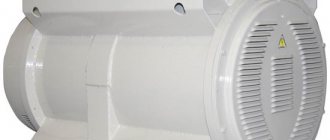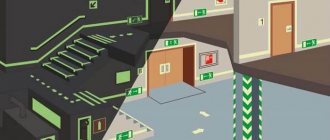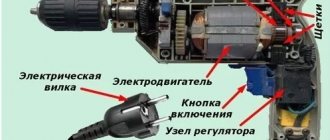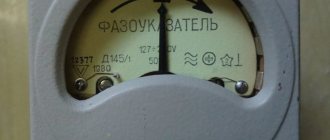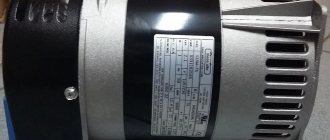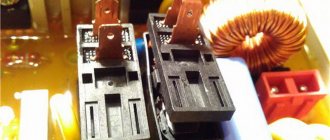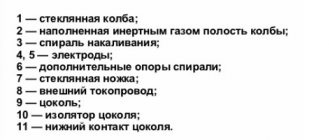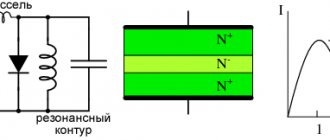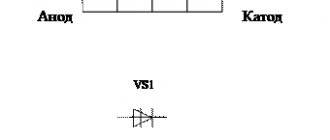A surge protector will help protect expensive electrical appliances from network failures. Any household appliance is afraid of power surges that can damage it, so experts advise protecting washing machines, television, audio, and computer equipment with surge protectors that will protect them from repairs.
What is a surge protector?
A modern surge filter is a device for protecting electronic equipment from network, high-frequency, low-frequency, impulse noise, overcurrent or short circuit. It allows vibrations of 50 Hz to pass through and blocks other fluctuations. When the mains voltage is low, the unit turns off the devices to prevent the engine from burning out. If the current drop is short-lived, many filters can use the charge of their capacitors to support the normal operation of the equipment.
According to the connection option, all devices can be divided into two groups:
- Internal
. They are built into the equipment at the production stage. The device is a housing made of impact-resistant material. All parts are protected by a non-conductive liquid poured into it. - External network filters
. They look like extension cords and are purchased separately by the consumer. The equipment must be connected to a power source through an external filter.
Surge filter device
To prevent voltage dips and peaks from entering the network, the physical design of the network filter must include several elements:
- Varistors are used for surge current protection. With their help, during a sharp jump, the resistance increases and the energy is converted into heat, protecting the equipment.
- An LC power filter is used to filter out high-frequency interference. Jumps of this type are created by electric motors and generators.
- Fuses provide protection; if they burn out, the part must be replaced with a new one.
- The surge protector may include capacitive capacitors that stabilize voltage surges.
What is the difference between a surge protector and an extension cord?
An extension cord with several sockets should not be considered a protective filter. A regular “carrying” is the same socket, but in a different design. It is used to connect electrical appliances located in hard-to-reach places. Why do you need a network filter - to suppress high-frequency interference (LC filter) and equalize voltage surges in the network (using a varistor). It differs from an extension cord in size (it is not made small), quality of materials and price.
Distinctive characteristics
Often devices are confused due to the presence of a switch . However, you need to understand that the extension cord with a button does not have an interference filtering option. Moreover, the difference between them does not lie in the button at all, since it performs the same tasks - breaking the electrical circuit .
An extension cord is actually the same socket in the wall, only with the ability to be moved to any place . A surge protector is a much more technologically complex electrical device. It is not only mobile sockets, but also a protective device for electrical equipment . It filters passing current and suppresses impulse noise.
The flow of electric current is not uniform; it contains RF interference , which can negatively affect the operation of many devices, especially expensive equipment such as televisions, washing machines, refrigerators, computers, etc. Such equipment is designed to operate on current with a frequency 50 Hz . But in electrical networks there is high-frequency interference, caused, among other things, by other equipment. Due to high frequency surges, malfunctions of household appliances may occur. The filter smoothes out such interference, preventing problems.
Most modern filters are equipped with an additional module with USB outputs . This allows you to charge smartphones and other portable equipment without using a separate power supply. However, there are many models without such a module.
Another key difference is cost . Prices for devices with interference filtering functions are much higher than for simple extension cords. This is due to the use of rather complex electrical circuit boards in the design that protect equipment from interference.
Surge filter - varieties
A modern electrical extension cord - surge protector can have different levels of protection:
- Basic protection
. The simplest type, filters are compact in size and have a small number of sockets. - Advanced protection
. The optimal type of filters in terms of price/quality ratio. Perfectly suitable for most types of home appliances. - Professional protection
. Such a surge protector should be installed for expensive electrical equipment that is sensitive to the slightest changes in the network.
Surge filter without wire
A programmable electrical surge protector with a Wi-Fi interface does not require wires. Its range is several tens of meters. You can manage energy consumption via a local network (LAN connection), via Wi-Fi via the Internet or via mobile communications (GSM) via SMS messages. It's easy to set up a filter from any computer or smartphone. The device is able to remember the schedule for sockets and turn them on/off depending on events.
Surge filter without button
Turning off the device using a button is easier than constantly unplugging the cord from the outlet. There are two types of relay:
- General
– turns on/off all sockets at the same time. - Individually
- turns on/off a specific outlet. - Remote control
- turns on/off sockets from a distance, this device is convenient to use when the surge protector is in a hard-to-reach place, obscured by other objects
A power strip without a switch button differs from previous options in that all its sockets are constantly on (working) while the device is connected to the network. It can be used for equipment that requires continuous power supply - router, refrigerator, modem, alarm clock. Such filters are simple, no frills, but perform excellent functions in protecting equipment.
Surge filter with grounding
Plugging the filter into a grounded outlet is a way to achieve maximum efficiency. Ignoring this requirement may result in a severe electric shock. For equipment, it is better to use a surge protector extension cord equipped with grounded sockets. The specifications for such a device indicate “three-phase protection.” A varistor is soldered onto each of them. Even if the wiring uses two phases, the device will filter out pulse surges. Overload and short circuit protection, and LC filters can function without grounding.
Angular surge protector
A corner surge protector is very convenient for connecting a large amount of equipment. The sockets on it are placed not on one panel, but on adjacent ones - top and side (for example, 4 on one and 4 on the other). The result is not a very long or wide device with a large number of mounting slots. You can use a corner surge protector for a computer or home theater. The distance between the sockets on it is large, which allows you to connect even large power supplies for equipment.
What is the difference between an extension cord and a filter?
It will be easier to answer this question by summarizing the main characteristics and parameters of the devices in the table.
| Network filter | Extension | |
| Main purpose | Not only reduces the distance between the socket and the device, but also eliminates the possible consequences of interference in the network. | Connects electrical appliances located far from the outlet. |
| Additional features | Built-in USB ports | – |
| Device example | APC Essential Surge Arrest | 2E 3xSchuko, 3G |
You might be interested in reading about equipment that requires a surge protector: Hi-Fi system SONY MHC-ELC99W: powerful sound without barriers
How to choose a surge protector?
When choosing a surge protector, you should pay attention to its size. Small models should be treated with caution. The documentation must clearly describe the protective properties of the model and its characteristics. What parameters matter:
- Number of sockets
. There are from three to eight, you need to decide in advance how many devices will be connected to the extension cord. - Wire length
. Varies from 1.8 to 5 m, it all depends on how far the equipment is from the outlet in the wall. - Maximum load
. Shows how much energy surge the filter can absorb. If for a basic device this value is 960 J, then for a professional device it is at least 2500 J. - Number and types of fuses
. It is better when there are several of them: the main one is fusible, the auxiliary ones are fast-acting and thermal. - Health indicator
. The LED lights up when the filter is working. If it is inoperative, the indicator turns off.
Surge filter for car
The manufacturer installs an internal varistor filter in the washing machine. It is located where the electrical cord begins. A surge protector for a washing machine protects the machine from high and low impulses, this is especially important for equipment with touch controls. Devices vary in level of protection depending on the manufacturer and the connected model. If they break down, they are completely replaced with original parts. The degree of protection is related to:
- maximum current and maximum load;
- rated current;
- passable voltage threshold;
- reaction time after a jump to shutdown.
Features of devices
Unlike a conventional extension cord, a surge protector (by the way, it can be without a cable) not only solves the problem of the distance between electrical appliances and outlets. The main advantage of this device is that it is able to protect household and office equipment from power surges, high or low frequency pulses, shorted ones, caused by the operation of powerful electrical appliances, accidents, and thunderstorms. Since the surge protector absorbs all the impacts, the equipment does not fail. An extension cord only helps bridge the distance between the electrical appliance and the outlet. Even if it looks like a filter, this device is not capable of performing the functions of a complex “brother”. The differences between the devices we are considering also lie in the features of their synchronization. Surge filters should never be combined with each other. Extension cords - no problem. These devices can be “strung” on top of each other, as well as connected to a filter.
The best surge protectors
The rating of surge protectors is based on their energy efficiency, reliability of protection and interesting design features. The best manufacturers of such equipment will always delight you with quality:
- APC
. The company produces IPS, stabilizers, surge protectors. The Surgearrest series is the best for protecting computers and TVs; there are corner models with 8 sockets and USB ports. The devices have grounding, indicator lights, and reusable fuses. They contain filtering of electromagnetic interference and radio frequency noise. - Sven
. The company produces simple models and does not indulge in additional features, but the quality is excellent at an affordable price. Sven Fort Pro Black is a universal surge protector for a refrigerator, TV, and washing machine. Has protection against overloads, short circuits, voltage surges and case overheating. Number of sockets – 6, maximum absorbed energy 1050 J. - Interstep
. By choosing products from this company, you can avoid spending extra money and get a reliable multifunctional device for protecting household and computer equipment. The SP 206T model is equipped with USB connectors, electronic controls, and a liquid crystal display with the ability to set the switching time of the sockets.
Accessories and consumables
- They are not mandatory, but greatly facilitate the work.
- These include:
- carrying, which is difficult to do without;
- step ladder;
- an autonomous light source (after all, most electrical work is carried out with the power turned off) - this can be a flashlight powered by a battery or batteries. Flashlights that fit on the head and leave the installer’s hands free are very convenient;
- calipers for measuring the diameter of conductors;
- construction pencils and markers for marking wiring and installation locations for devices;
- laser level for punching straight lines.
Consumables include insulating tape, which is impossible to do without during electrical installation. It is better to have both PVC and cotton tape. It is often used for other purposes. For example, in order to mark the ends when disconnecting the cable, it is therefore advisable to have a tape of phase colors - red (phase C), yellow (phase A), green (phase B). Ultimately, the set of tools is formed depending on the volume and complexity of the work.
